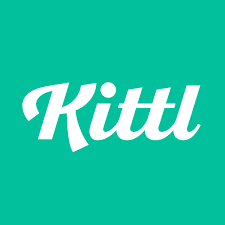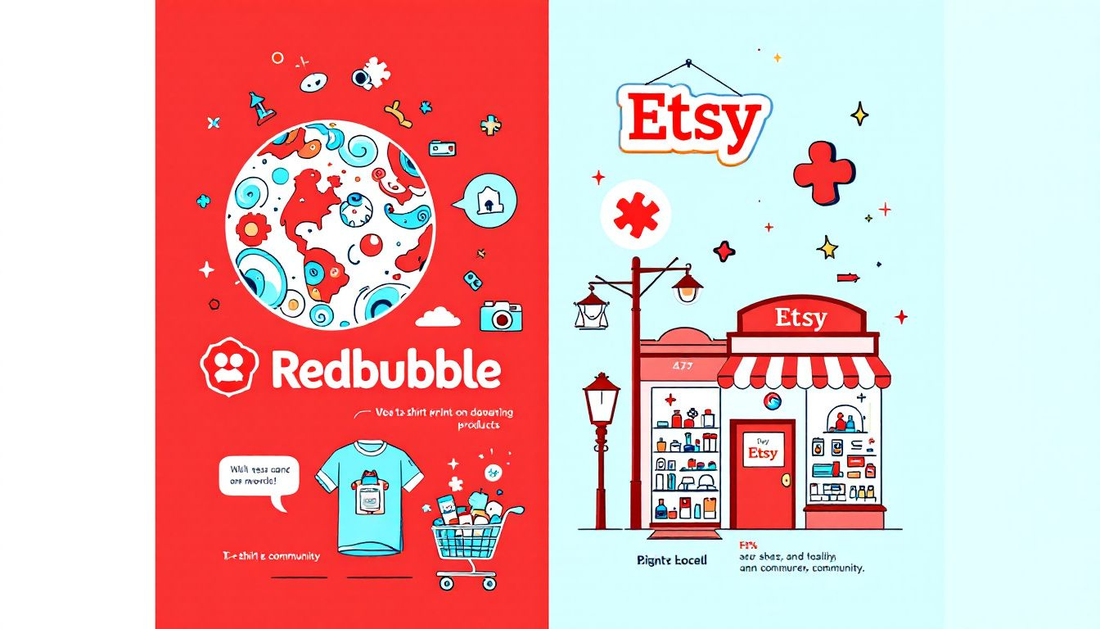
Redbubble vs Etsy: Best Platform for Artists in 2025
Share
Redbubble vs Etsy: which is better for artists in 2025? This guide compares their different models, user experiences and key advantages to help you choose the right platform for your art.
Redbubble vs Etsy - Key Takeaways
- Redbubble and Etsy cater to different artistic needs: Redbubble focuses on print-on-demand services while Etsy emphasizes handmade and vintage items.
- Etsy offers greater branding potential through customizable storefronts, whereas Redbubble provides a hassle-free selling experience with automated fulfillment.
- Artists can benefit from using both platforms to diversify their income streams and maximize their audience reach despite varying challenges in competition and fee structures.
Redbubble vs Etsy: Best Platform for Artists in 2025
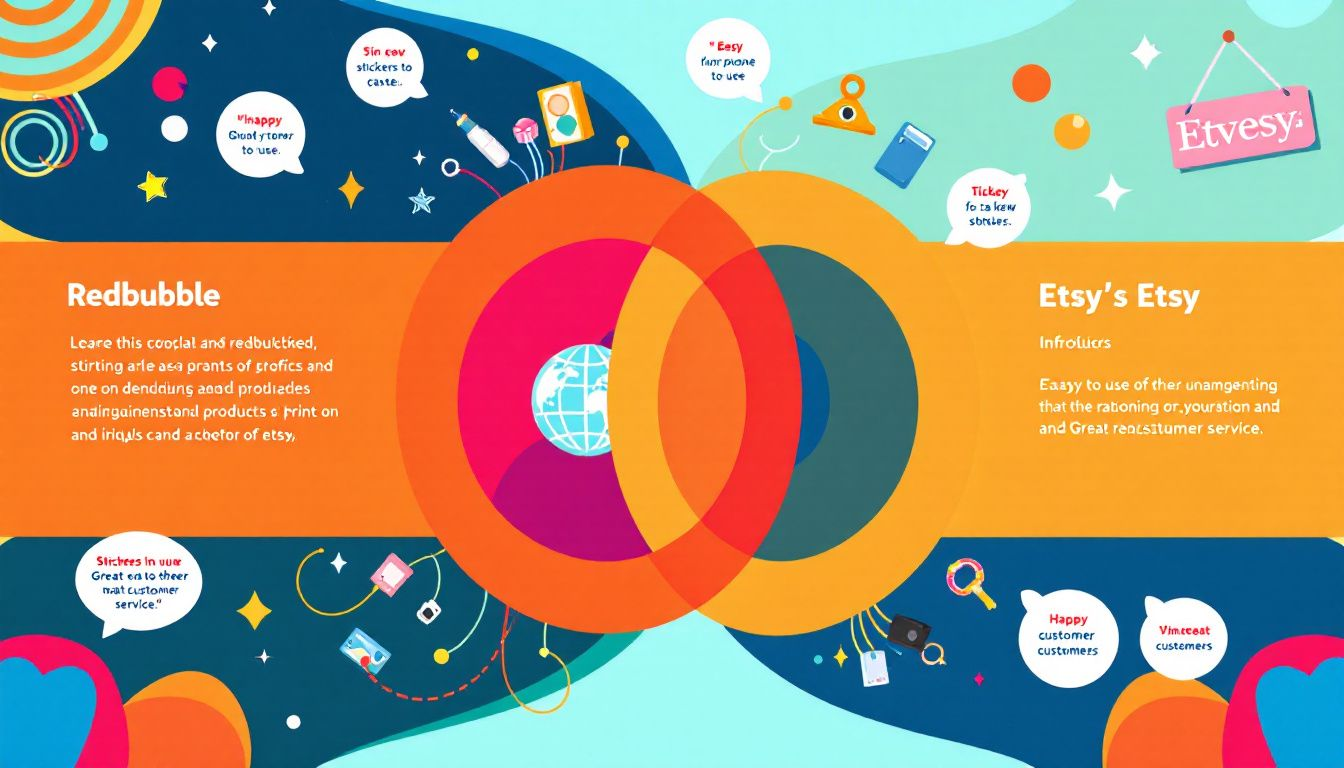
Redbubble and Etsy are two prominent platforms for artists looking to monetize their creative work through print-on-demand and handmade items. Both platforms allow artists to monetize their creations but cater to different audiences and product types. While Redbubble focuses on print-on-demand services, Etsy emphasizes handmade, vintage and custom items. This fundamental difference shapes the experience for artists on each platform.
Several factors like startup phase, branding and marketing strategies influence the choice between Redbubble and Etsy. Artists on Etsy benefit from personalized storefronts that enhance branding opportunities and customer connections. In contrast, Redbubble provides a hassle-free, print-on-demand solution that is user-friendly and integrates with social media platforms.
Artists often find success selling on both Redbubble and Etsy, allowing them to diversify their income streams and reach a broader audience. This approach can be particularly beneficial for those looking to maximize their profit potential and audience reach.

Introduction
This guide provides a thorough comparison between Redbubble and Etsy to help artists choose the best platform for their needs in 2025. This guide examines the pros and cons, user experiences and key differentiators of each platform to help artists make an informed decision.
Understanding the nuances of each platform can significantly impact success, regardless of whether you are a professional artist or just starting.
Overview of Redbubble and Etsy
Redbubble and Etsy offer unique opportunities for artists to sell their work, each with distinct characteristics and selling approaches. Redbubble operates on a print-on-demand model, allowing artists to sell their designs without maintaining inventory. This model is particularly appealing for those who prefer a hands-off approach to selling.
We always use Kittl for our designs rather than Canva as excels in print-on-demand design and therefore makes it a better choice for those focused on print products.
On the other hand, Etsy serves as a marketplace for handmade, bespoke and vintage items, requiring sellers to produce or source their products independently. This hands-on approach allows for greater control over the product but also requires more effort in terms of production and fulfillment. Etsy’s focus on detailed product listings, including title, description, categories, provenance and product photos, helps attract customers looking for unique, non-mass-produced items.
A key consideration for artists when choosing between Redbubble and Etsy is the potential for maximizing profits and audience reach. With Redbubble’s no listing fees and Etsy’s detailed listings, both platforms offer different advantages depending on the artist’s business model and target audience. Additionally, selling on both platforms can help artists expand their reach and profit potential.
How Redbubble Works
Redbubble operates on a print-on-demand model, providing a hassle-free solution for artists to sell their designs. Artists upload their designs and select the products, such as T-shirts, stickers, mugs and phone cases, to apply these designs to. Redbubble manages production, shipping and customer service once a customer makes a purchase, allowing artists to focus on creating new designs.
Artists earn a commission from every sale. They also have the ability to set their own profit margins on the products. This flexibility allows artists to set their earnings based on their chosen pricing strategy.

Advantages of Using Redbubble
One of the significant advantages of using Redbubble is the absence of upfront fees, making it free to join and start selling. The print-on-demand nature of Redbubble appeals to artists who prefer a hands-off approach, eliminating the need to handle production or fulfillment. The global reach of Redbubble also expands the market potential for artists, allowing them to sell to a worldwide audience.
Moreover, Redbubble enables artists to set their own profit margins, providing opportunities for passive income without the hassle of managing inventory. Redbubble offers promotional tools like social media links and affiliate programs to help artists market their products effectively.
Disadvantages of Using Redbubble
Despite its many advantages, Redbubble does have some drawbacks. The high number of artists on the platform increases competition, making it challenging for new designs to stand out. Popular designs can quickly become oversaturated, reducing their uniqueness and appeal.
Additionally, some artists may find the base royalty rate lower than desired, which can impact overall profitability. It offers fewer customization options, limiting artists’ ability to create a distinct brand identity.
How Etsy Works
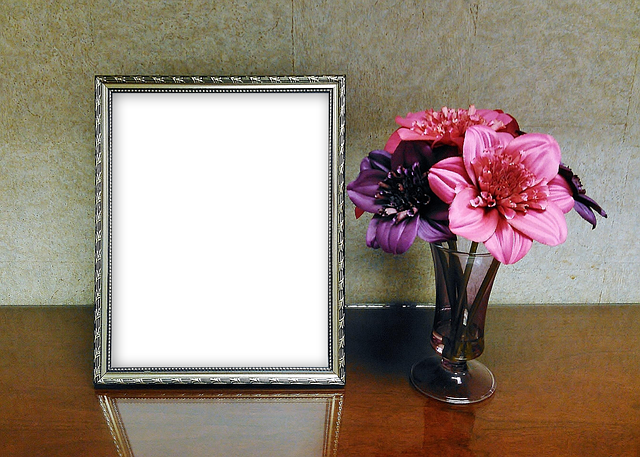
Etsy serves as a platform where artisans can sell handmade goods and vintage items directly to consumers. The platform has carved out a niche in the e-commerce landscape by focusing on handcrafted and artisanal goods, including various craft supplies. Products on Etsy range from bespoke jewelry to tailor-made furniture, offering a wide variety of items that appeal to different customer preferences.
Etsy sellers manage the manufacturing and shipping of their products, making the selling process more hands-on. This method allows sellers to control product quality and customer relationships but requires more effort and time.
Benefits of Selling on Etsy for Etsy Sellers
Selling on Etsy provides access to a highly engaged and diverse customer base. This online marketplace fosters a sense of community among sellers, providing networking and collaboration opportunities that can be invaluable for growing a business.
The platform offers various third-party integrations to assist sellers with marketing, inventory management and SEO. These tools enhance shop visibility, making it easier to attract niche markets and increase sales.
Drawbacks of Selling on Etsy
However, selling on Etsy comes with its own set of challenges. A frequent complaint from artists is the high fees associated with Etsy. The platform charges a listing fee of $0.20 per item, plus a 6.5% transaction fee and a 3% payment processing fee on sales. These transaction fees accumulate quickly, impacting overall profitability.
Artists on Etsy also face heightened competition due to the platform’s large community of over 7 million sellers. Success on Etsy often requires strong SEO and marketing skills to stand out and attract customers.
Key Differences Between a Redbubble and Etsy shop
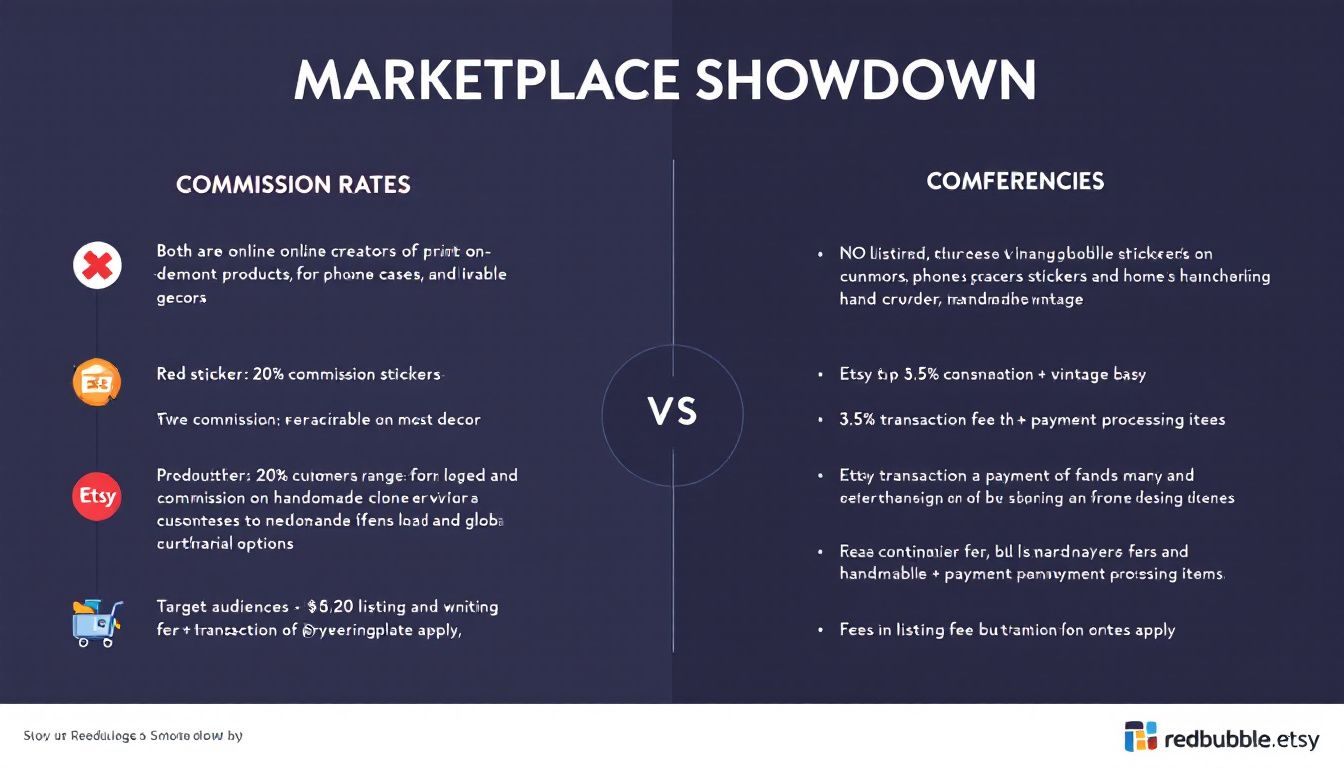
When comparing Redbubble and Etsy, several key differences emerge. Etsy has a significantly larger user base, with 7.3 million sellers compared to Redbubble’s 800,000 artists. This larger user base results in more competition but also a more extensive network of potential buyers.
Both platforms provide opportunities for artists to earn from their designs, but the competition levels vary significantly. Redbubble’s print-on-demand model contrasts with Etsy’s focus on handmade and vintage items, affecting the type of products available and the selling experience.
Product Types

Redbubble specializes in print-on-demand products, enabling artists to upload designs and apply them to a predefined range of items. The platform offers over 60 quality products, including T-shirts, hoodies, mugs, wall art, shower curtains and clocks. Although this model limits product types, it simplifies selling by eliminating inventory management.
Etsy offers a greater diversity of products, including handmade, vintage and custom-made items. An etsy seller can list anything from bespoke jewelry to tailor-made furniture, catering to a wide range of consumer preferences. This variety often enables sellers to command higher prices for unique, customizable items.
Pricing and Fees
Pricing and fees also differ significantly between Redbubble and Etsy. The platform charges a listing fee of $0.20 per item, plus a 6.5% transaction fee and a 3% payment processing fee on sales. These fees accumulate quickly, especially for sellers with numerous items.
On the other hand, Redbubble does not impose listing fees, making it easier for artists to start selling without upfront costs. Redbubble sellers incur earnings-based account fees ranging from $1.00 to $92.00, depending on their sales. This structure allows sellers to set their prices by choosing a margin percentage for their products.
Customization and Branding
The two platforms also offer different customization and branding opportunities. Etsy allows sellers to craft their own etsy store appearance extensively, enhancing their branding opportunities. This feature allows sellers to build a unique brand identity and create a personalized shopping experience.
In contrast, Redbubble has limited customization options for sellers, primarily focusing on the product’s design aspect. While this simplifies the selling process, it limits the ability to create a distinct brand identity compared to Etsy.
Shipping and Fulfillment
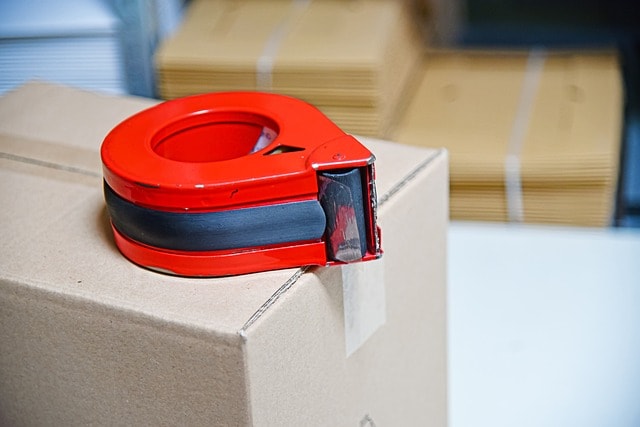
Shipping and fulfillment processes differ significantly between Redbubble and Etsy. Redbubble provides automated shipping and fulfillment, relieving artists from managing logistics. The platform handles shipping for its products, allowing sellers to focus on their art without worrying about fulfillment.
On the other hand, Etsy requires sellers to independently handle shipping, which can involve additional responsibilities and costs. Etsy sellers manage their own shipping processes, requiring more effort and planning.
Seller Experience on Redbubble vs Etsy
The seller experience on Redbubble and Etsy varies significantly because of their different operational models. Redbubble offers a simplified selling process with minimal setup requirements, appealing to creators focused on design. The platform’s automated fulfillment and customer service management make it an attractive option for artists looking for a hassle-free selling experience.
On the other hand, Etsy demands a more hands-on approach from its sellers. This includes managing product creation, fulfillment and customer relationships, which can be both time-consuming and rewarding. The extensive customization options for Etsy shops allow sellers to create a unique brand identity, fostering a stronger connection with customers.
Setting Up Shop

Setting up a shop on Redbubble is quick and easy. Artists need to create a free account, fill out their store details, confirm the account and upload their designs. This straightforward process allows artists to start selling their work without worrying about production or customer service.
In contrast, creating an Etsy shop involves a more time-consuming process. During sign-up, sellers must add at least one product listing, requiring detailed item information. This hands-on method allows Etsy sellers more control over their product and customer interactions but requires more time and effort.
Managing Orders
Redbubble’s automated fulfillment process streamlines order management. Once a design is uploaded and a customer makes a purchase, Redbubble handles production, shipping and customer service. This allows artists to focus on creating new designs rather than handling logistics.
Etsy allows sellers the flexibility to set their own shipping arrangements while managing orders. Sellers can print shipping labels directly from Etsy, benefiting from discounts with USPS and FedEx. This level of control can be beneficial for those who prefer to manage every aspect of their business, but it also adds to the workload.
Customer Service

Redbubble handles customer service on behalf of its sellers, managing returns and customer messages. This is a significant advantage for artists who prefer to focus on their creative work rather than dealing with customer inquiries and issues.
Etsy relies on direct communication between sellers and buyers for personalized service. This method can enhance customer relationships and foster loyalty but requires sellers to be responsive and manage interactions effectively.
Profitability and Sales Potential
Both Redbubble and Etsy offer substantial profitability and sales potential, but they come with different challenges. Etsy connects 96.3 million buyers with 7.5 million sellers, offering a platform for 120 million individual products. The platform’s gross sales of $3.1 billion and nearly 90 million unique buyers highlight its vast market potential.
Artists on Redbubble typically earn between 10% to 30% of the sale price as their artist margin. Both platforms face market saturation, making selling difficult. Success on Redbubble often requires a strategic approach, unique designs and effective marketing skills.
Profit Margins
Redbubble allows artists to set their markup on top of a base price for products, providing flexibility in profit margins. Artists can determine their earnings based on their chosen pricing strategy. In contrast, Etsy sellers incur listing, transaction and payment processing fees, which can affect their overall profit margins.
Digital downloads on Etsy offer significant profit margins with minimal costs. Customizable products often sell at higher prices due to their unique nature, providing opportunities for substantial earnings.
Marketing and Promotion

Marketing and promotion are crucial for success on both platforms. Redbubble offers promotional tools like social media links, product widgets for websites and an affiliate program. These tools help artists market their products effectively and reach a broader audience.
Etsy sellers often need to invest time in learning the platform’s algorithms to enhance visibility and reach. Optimizing product listings and utilizing Etsy’s marketing tools can significantly impact sales and profitability.
User Reviews and Feedback
User reviews and feedback offer valuable insights into the experiences of independent artists on both platforms. Redbubble is praised for its user-friendly interface, making it easy for artists to upload designs and manage sales. With around 800,000 users, Redbubble sells to approximately four million customers annually, indicating a robust market presence.
Etsy, with its community of 7.5 million sellers, receives positive feedback for fostering a supportive and collaborative environment. High fees and competition are common concerns among Etsy sellers. Understanding these experiences can help new artists navigate the challenges of selling on these platforms.
Alternatives to Redbubble and Etsy
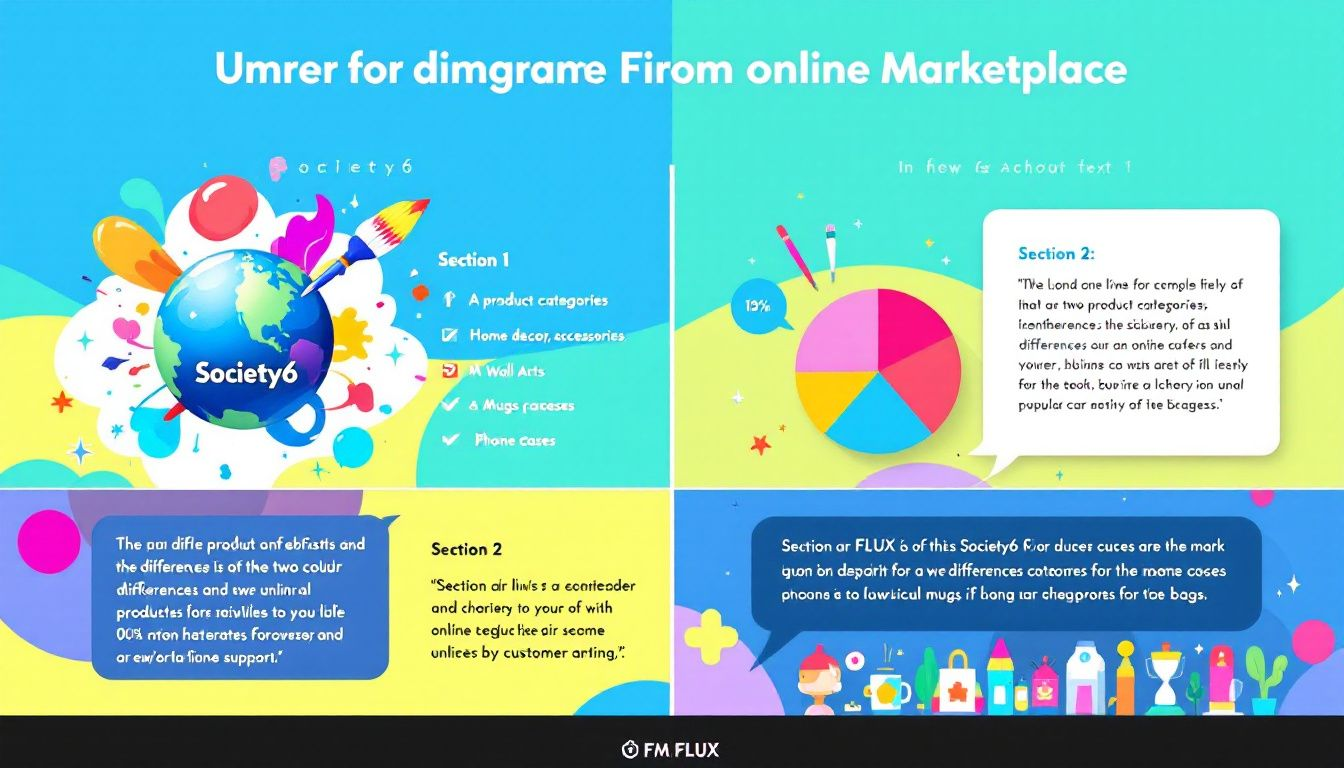
While Redbubble and Etsy are popular choices, there are several alternatives that artists might consider. Etsy supports print-on-demand products through integrations with services like Printful and Printify. Big Cartel caters specifically to artists and makers, offering a simple platform for selling.
Other alternatives include Zazzle, which focuses on customized gifts and products and Amazon Handmade, which targets artisans using Amazon’s large customer base for increased visibility. Shopify is ideal for those wanting to create their own online store with extensive customization options.
Society6 is known for high-quality art prints and unique home decor items, while Teepublic specializes in apparel with competitive profit margins for artists.
Summary
In summary, both Redbubble and Etsy offer unique opportunities and challenges for artists looking to sell their work online. Redbubble’s print-on-demand model provides a hassle-free selling experience with no upfront fees and automated fulfillment. However, high competition and limited customization options can be drawbacks. Etsy, on the other hand, allows for extensive customization and a hands-on selling process, but it comes with higher fees and increased competition.
Ultimately, the best platform for an artist depends on their specific needs and goals. For those who prefer a hands-off approach and automated processes, Redbubble may be the ideal choice. However, artists looking to create a unique brand identity and engage directly with customers might find Etsy more suitable. By considering the key differences and evaluating personal preferences, artists can make an informed decision that maximizes their success and profitability.

Further Reading for your Print on Demand Business:
Is Print on Demand still viable in 2025
Print on Demand for Passive Income
Dropshipping vs Print on Demand
Mastering Selling Prints on Amazon
Frequently Asked Questions
What are the main differences between Redbubble and Etsy?
The main difference between Redbubble and Etsy is that Redbubble operates on a print-on-demand model where it manages production and fulfillment, whereas Etsy primarily focuses on handmade and vintage items, requiring sellers to oversee their own production and shipping.
Which online marketplace is more cost-effective for new artists?
Redbubble is more cost-effective for new artists, as it has no listing fees and manages fulfillment, unlike Etsy, which imposes multiple fees.
Can I sell my print on demand products on both Redbubble and Etsy simultaneously?
Yes, you can sell on both Redbubble and Etsy simultaneously, as many artists do to diversify their income and expand their audience. This approach allows for greater potential sales and visibility for your work.
How do I set my profit margins on Redbubble?
To set your profit margins on Redbubble, you can adjust the markup percentage over the base price of the products. This gives you the flexibility to determine your desired profit for each sale.
What are some alternatives to Redbubble and Etsy?
Consider exploring Printful, Big Cartel, Zazzle, Amazon Handmade, Shopify, Society6 and Teepublic as viable alternatives to Redbubble and Etsy, as each platform presents distinct advantages for artists.








































































































